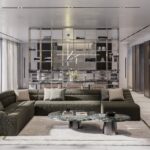In an age of seriality and speed, design rediscovers its deepest roots: it is not only about the finished product, but about the gesture that generated it. Hammers, lathes, blowpipes: simple tools that, in the hands of master artisans, become the beating heart of innovation. It is in this constant dialogue between human skill and the physicality of matter, whether marble, clay, wood or incandescent glass, that the secret of the most meaningful projects is concealed. The result of this process is, essentially, an act of memory. This philosophy translates into an architecture profoundly rooted in place, one that elevates human, psychological and environmental well-being through the recovery of history and local craftsmanship.
The most influential design today is measured in depth: the ability to take root in context while honouring knowledge. Proof of this is the Franco-Lebanese architect Lina Ghotmeh, included in the Time100 Next 2025 list as one of the most influential figures in the world. Through her ‘excavations’ and the use of locally produced bricks, Ghotmeh embodies the idea of an archaeology of the future and rediscovers the power of the hand.
From her ethos to the design of the Gelephu Airport in Bhutan, to the ethic of restoring historic buildings such as Chalet 1936, the imperative of the field is clear: to create spaces that not only endure, but that breathe the context and the history of humankind. The same search for authenticity is reflected in the most intimate and functional environment of the home. Our Album gathers the signs of a way of living in transformation within the realm of living
spaces and the kitchen: collections in which materials breathe, lines flow with lightness, and silent inventions redesign domestic life with grace and measure. An evolution that is completed in the ritual of sharing, where design becomes the frame of human relationships. Enjoy your reading.






